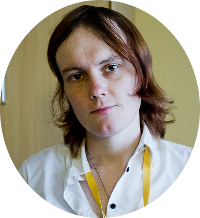Am I getting a reputation for being someone who blogs about MPs doing silly things? I suspect I may be, as I had a couple of people point me at this piece from “This is Gloucestershire”.
That a Tory MP thinks storing everyone’s DNA is a good thing probably comes as no surprise, but it’s baffling that Liberal Democrat MP Martin Horwood also apparently came out in support of this idea. Being a Liberal Democrat, it’s no surprise that TheyWorkForYou.com lists him as voting very strongly against introducing ID cards.
But if you collect the DNA of everyone in the country, are you not just creating an ID database? Wasn’t the database the major problem with the ID card system in the first place? And if you don’t have an ID database, how do you know you have everyone’s DNA anyway?
Even without the usual ID card arguments, collecting everyone’s DNA is problematic, as Arizona found out with a database of less than 70,000. Getting a duplicate obviously flags up that there is a problem, but a bit of research shows we’re not really sure of the statistics behind DNA. What happens if we collect everyone’s DNA and throw up a single match, because the offender wasn’t on the database or there was a false negative?
Someone completely innocent gets thrown in jail and has their life picked over by the police. They may even be convicted by the courts that don’t fully understand how this works, because they don’t do statistics.
Lets say that the DNA testing system is more than 99.999999% accurate. (That’s a made up number by the way) To be precise, let’s say the chances of a false positive are maybe somewhere in the region of one in two hundred and fifty million. But if for every sample you test 61 million people, (The population of the UK) you’ll get a false positive one time in 4, assuming I’m remembering my A-Level statistics correctly!
At the moment, neither the police nor the courts (And certainly not juries) are trained to understand statistics in this way. Science says that the DNA testing is accurate to one in two hundred and fifty millinon, that’s beyond any reasonable doubt, yes?

Actually, if I remember my A-level stats, it would be even higher.
Imagine you have a fair coin – if you flip it twice, there is a 75% chance of getting at least one head.
So if when you test a DNA sample against one in the database there’s a 1/250 million chance of getting a false positive, testing it against the whole database is like flipping a coin that has a 1/250 million chance of coming up heads 60 million times. And with that many flips, the chance of getting *no* heads is very low (can’t remember the formula you can use to figure it out though).
I checked it, the formula is much simpler than I thought.
The chance of getting no false positives when you test a single sample is (249,999,999/250,000,000)^61,000,000 or 78%.
So there’s over a one in five chance of getting a false positive every single time the test is run!
If you run four tests, there’s over a 60% chance at least one of them will throw up a false positive.